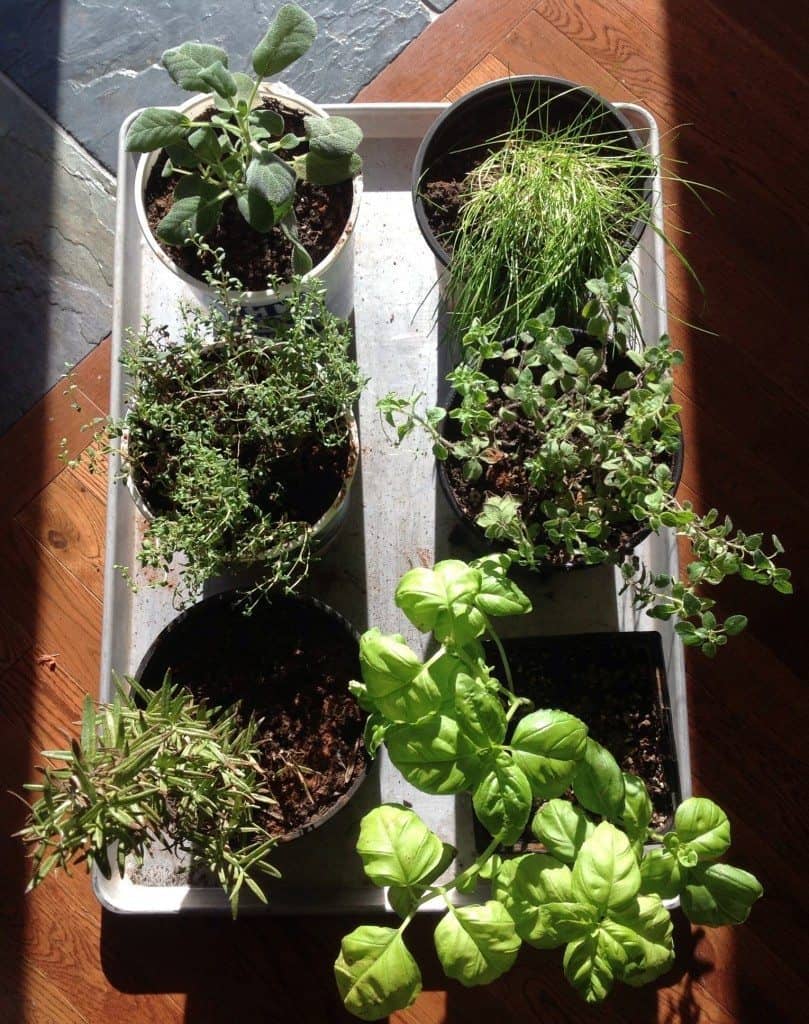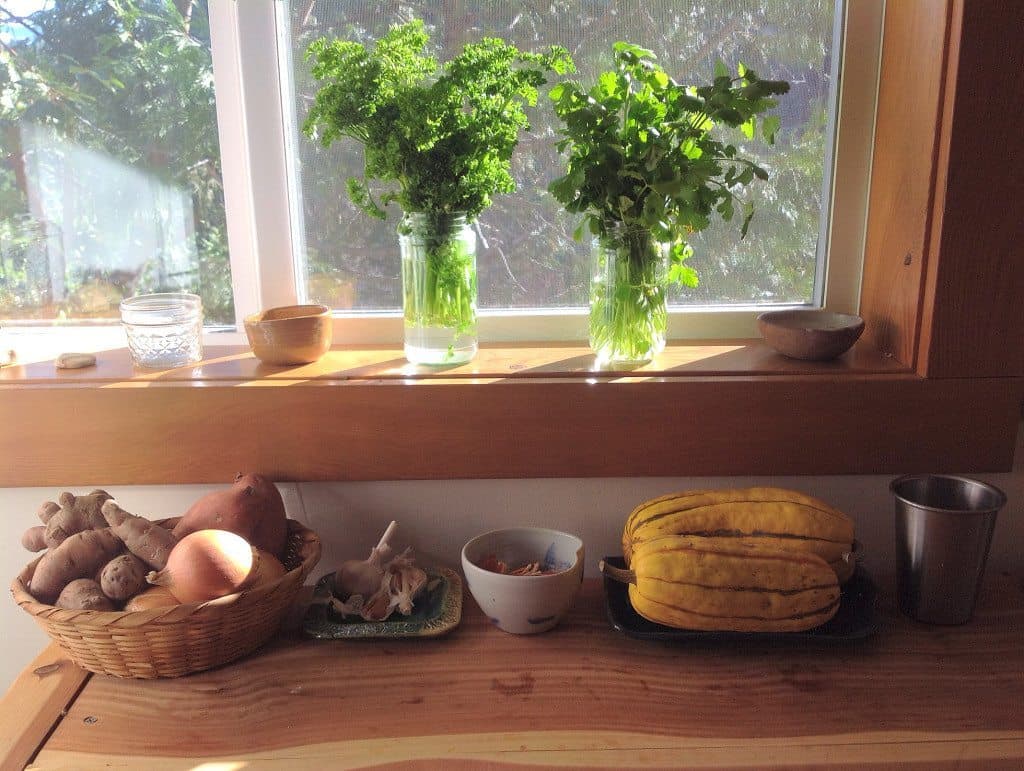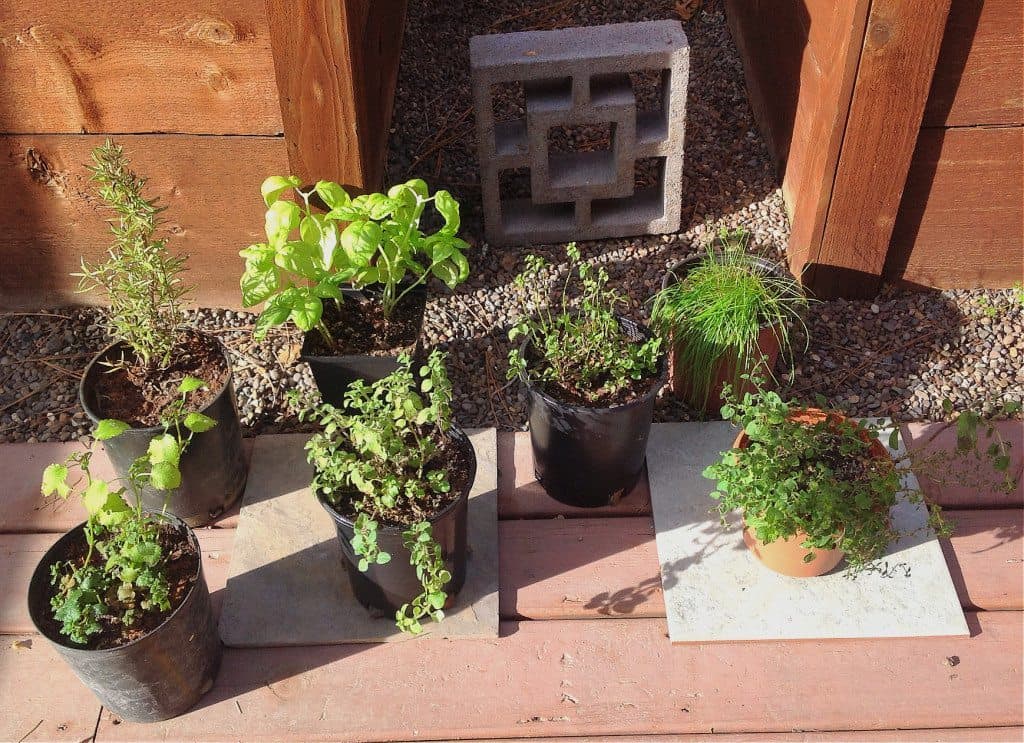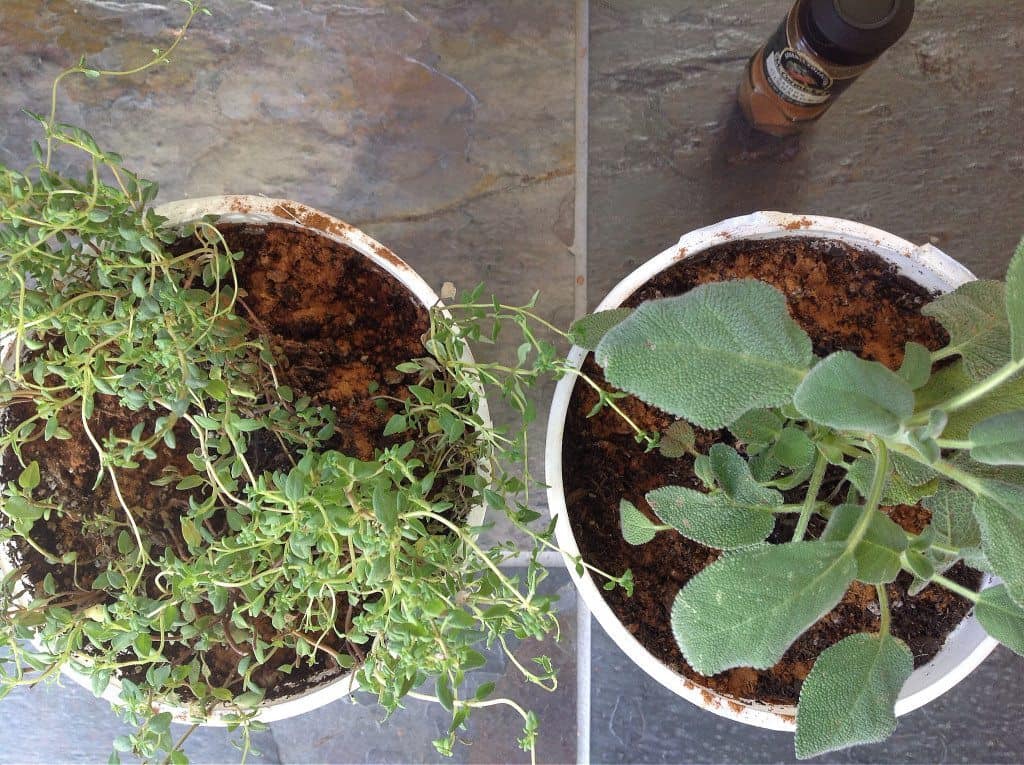This is Part 1 in my Grow in Winter series, check out Part 2: Sprouts and Part 3: Regrow Veggies and Order Seeds!
Ok, so since I’m still learning (this blogging thing is no joke!) I’m going to make this easy on all of us. This post will be more about inspiration rather than learning (ok, there’s a tiny bit of learning). Seriously, no one really needs to be told how to grow herbs. Just go down to your local nursery, or even Trader Joe’s for that matter, and pick up a few pots of fresh herbs to put in your windowsill or other somewhat sunny patch in your house. Even if you don’t get a lot of sun in the winter, unless you’re in Alaska they should be fine with what you have. Water them every so often (not too much!), cut a little off here and there to use in your cooking or tea (mint!) and breathe in all of the oxygen they are pumping out into whatever your indoor space may be. Just looking at them can make you feel better.

Clockwise from top left: sage, chives, oregano, basil, rosemary, thyme
Indoor Herbs to Grow Over Winter
There are many wonderful choices of herbs you can grow indoors over the winter. Often, you’re only limited by how much space you have since some herbs can grow larger than others. Some great windowsill herbs include rosemary, thyme, basil, or chives.
I also have mint (not shown) that I often add to my nightly tea. Even when you buy herbs at the store in bunches, don’t just throw them into some corner or drawer in the fridge where they’re bound to be forgotten about. I cut the very end tips off the stems and put them in a jar of water on my windowsill in my kitchen so that I remember to use them.


Herbs like to go outside once in a while, kind of like a dog or cat but without the poop
Natural Mold Treatment on Indoor Herbs
One problem that you may encounter, especially if you live in the Pacific NW or other areas prone to rain and humidity, is mold growing on the surface of the soil. I found the perfect solution… just scrape off the mold as best as you can and sprinkle cinnamon on the soil. It’s a natural anti-fungal and works like a charm, plus is smells good, too!

This is part 1 in the Grow in Winter series. More to come!


Are you sure it’s ok to use cinnamon on the soil? I feel like it could be bad for the soil food web since some fungi is so important. I bet it works really well!
Yes, it’s fine to use. A lot of indoor plants are prone to mold on the surface of the soil, especially if you live in a humid environment, which is not good for the plant or for you. A little bit of cinnamon is a good natural solution.
Love this Colleen. Would go out and buy herbs….but our herb garden is doing well! Love the cinnamon idea!
Glad that it’s doing good! You’re pretty lucky to live in a place with such beautiful weather…